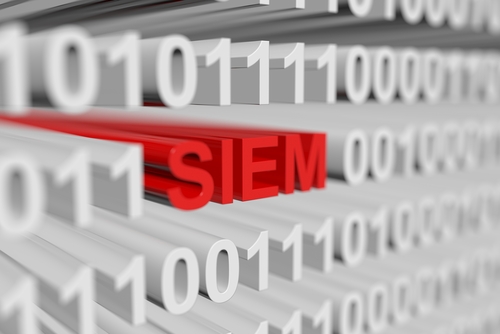This blog looks at how cyber drills using your SIEM deliver enhanced learning outcomes for your SOC team.
Military organisations use exercises and tactical simulations to prepare their soldiers for battle. This preparation, where tactics and specific responses are rehearsed in representative live-like operational environments can also be used by SOC managers to boost performance and increase focus on threat hunting. By deploying the equivalent of a cyber firing range, analysts can practice their skills and respond to attacks in a safe learning environment.
How Do Cyber Drills or a Cyber Firing Range Work?
Cyber drills can be based on simulated attacks using the same tools and techniques hackers use. The SOC team can use the core technologies they rely on to monitor and respond to attacks every day. Most SOC technical environments are built on a Security Information and Event Management (SIEM) platform, thus having a SIEM in a test network, where the cyber drill is run will yield the most benefit. Some companies hire penetration testers to launch real attacks against these test environments, to further boost the value of these educational experiences for SOC analysts.
SOC analysts can practice both their defensive security processes and develop new ways of responding to attacks, especially if the attacker is a real person, using their wile and cunning to sneak past the SOC’s defences.
Note: Capture the flag (CTF) is a term used to describe simulated attack environments with a goal, where competitive penetration testers and/or security teams pit their wits against each other and increasingly complex puzzles to capture flags (normally files or special codes) from systems that have systemic weaknesses. The competition is based on attackers using their knowledge and ingenuity to be the first to break into the target system and retrieve the flag. This CSO Online article explains CTF in more detail.
The SOC’s test environment can be used for CTF challenges, partly acting as the proving ground for new technology as well as having production-representative platforms, such as the SIEM to test out new correlation rules and data analysis capabilities. The more representative the test environment is to the production environment, the more value the SOC will realise.
Penetration tests against this test environment realise two further outcomes, offering value to the business: the SOC staff get familiar with dealing with response activities during a live attack, while also testing new ways to thwart those attacks without fear of disrupting the production system. Live attack conditions are impossible to create as a tabletop exercise, but if the SOC team is running the same SIEM technology they use on the production system, while watching an attacker target different systems and applications using a variety of tools, they soon forget it’s a drill and respond accordingly.
Building a Cyber Range Platform
Some companies choose to invest in commercial cyber range platforms, which get integrated into the SOC’s test network alongside the SOC’s tools. Other organisations opt to build live-like networks with clones of their production systems and then slowly introduce vulnerabilities that the SOC can detect and respond to. This second option, while useful, remains passive, since these are not attacks, rather they are vulnerabilities and threats that the SOC team can discover.
By asking a penetration tester to step into the drill, it becomes a proactive learning experience with live feedback on the efficacy of SOC team processes while the penetration tester pivots and tries new ways to get past their defences.
For this test environment to be a continual learning environment, like a firing range would be, its primary use should be as a work integrated learning tool as part of your SOC team’s career management. The platform can then report and track on learning outcomes for each staff member as they take new challenges and achieve new goals.
SIEM training, along with vulnerability management training, endpoint detection and response training and security management training can be integrated into the platform, so that the whole career plan can be addressed. Every SOC manager knows how important continual learning is for SOC analysts, so bringing everything under one integrated learning management system is a massive boost to productivity.
Use your SIEM Technology for Research Work
Some organisations use their SOC testing network for research and development purposes to determine the efficacy of new defensive technologies and processes, and to validate data mining hypotheses. Having a SIEM integrated into the test capability allows researchers to model threats and play back attacks, while running correlation rules across the data to see how effective and performant these database searches are.



Increasingly, organisations are hiring data scientists and collaborating with universities to assist in finding threat indicators in security data lakes. By allowing data scientists to access the cyber drill environment, they can use their knowledge of data science with the SIEM tool to run experiments, safe in the knowledge that their results can be obtained within a safe testing harness.
Cyber Security Operational Improvement Drills
Every SOC or managed security service provider needs to continually improve their underlying detection and response capabilities. The cyber drill test environment is the foundation of the SOC team’s learning experience, so it should have the objective of providing continual service improvement. New cyber challenges can be continually introduced, allowing the SOC team, who often have downtime between routine tasks (unless a real incident is happening), to routinely take up the challenges and test their skills.
Specific challenges relating to tuning and developing correlation rules within the SIEM environment can be used to help SOC analysts learn how to write better and more complex rules. By giving analysts specific goals relating to rule efficiency and speed of detection, a competitive spirit can be introduced into the team within this safe environment, making sure they know the effects of badly considered rules as well as rules that are well designed.
 About Huntsman
About Huntsman



